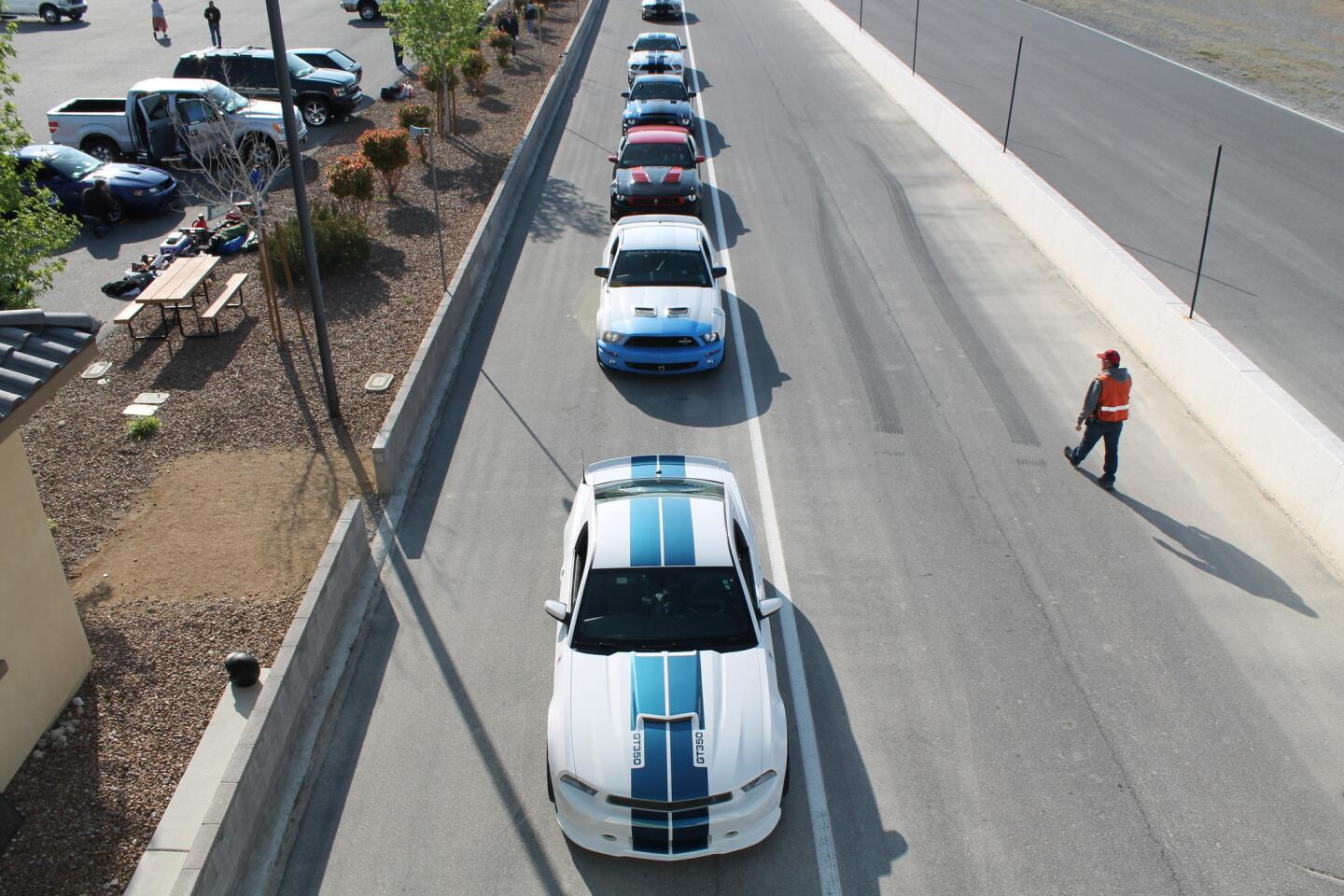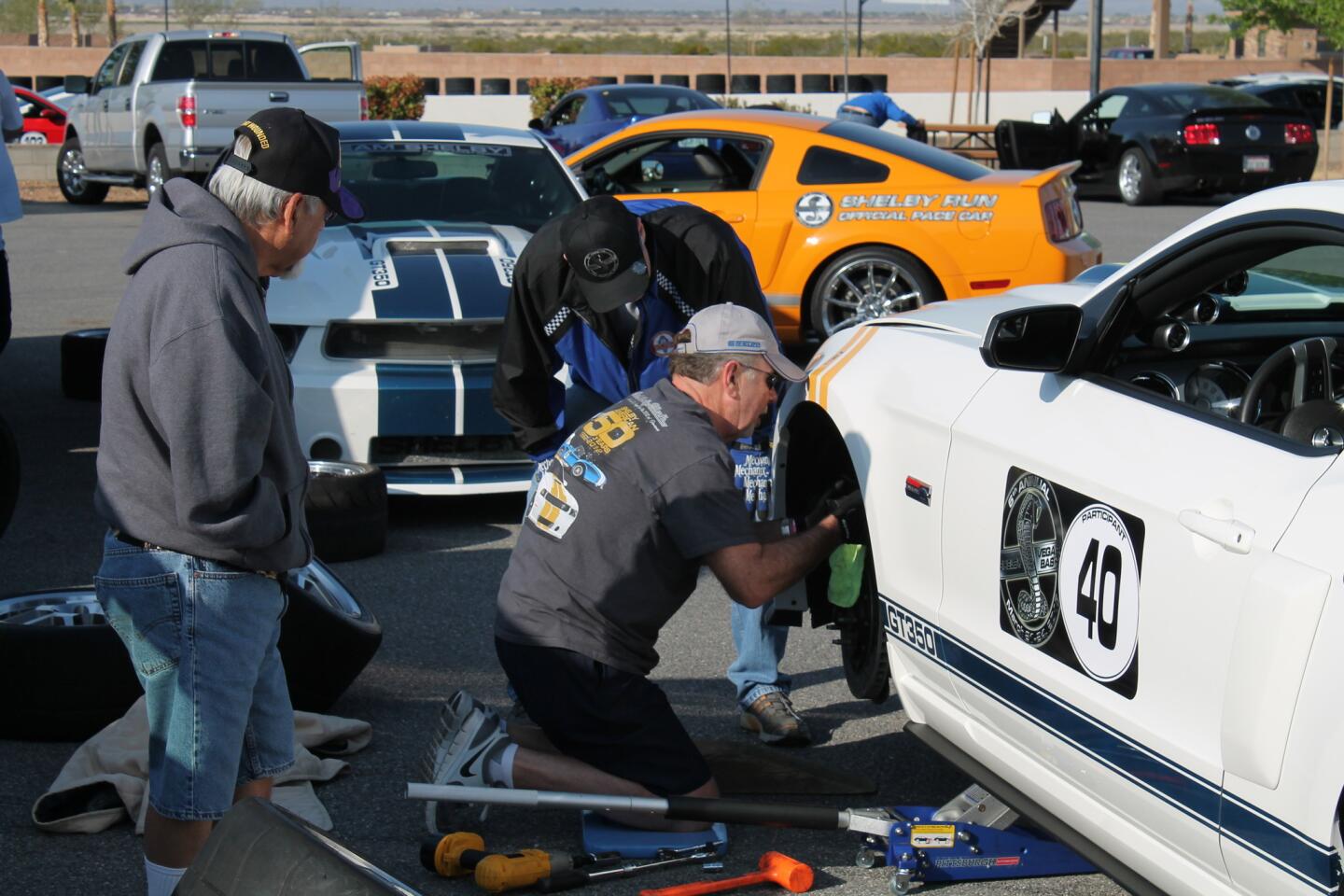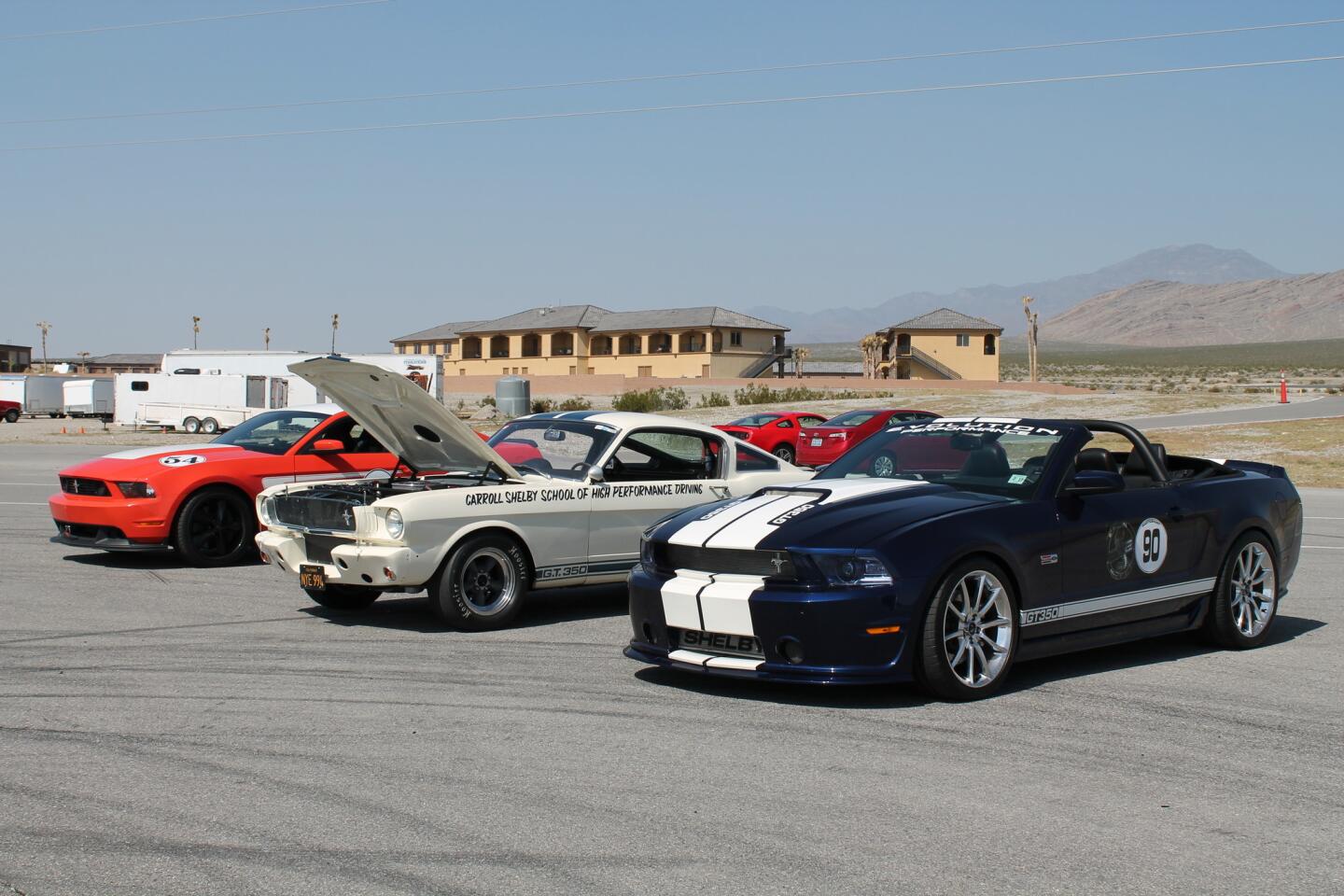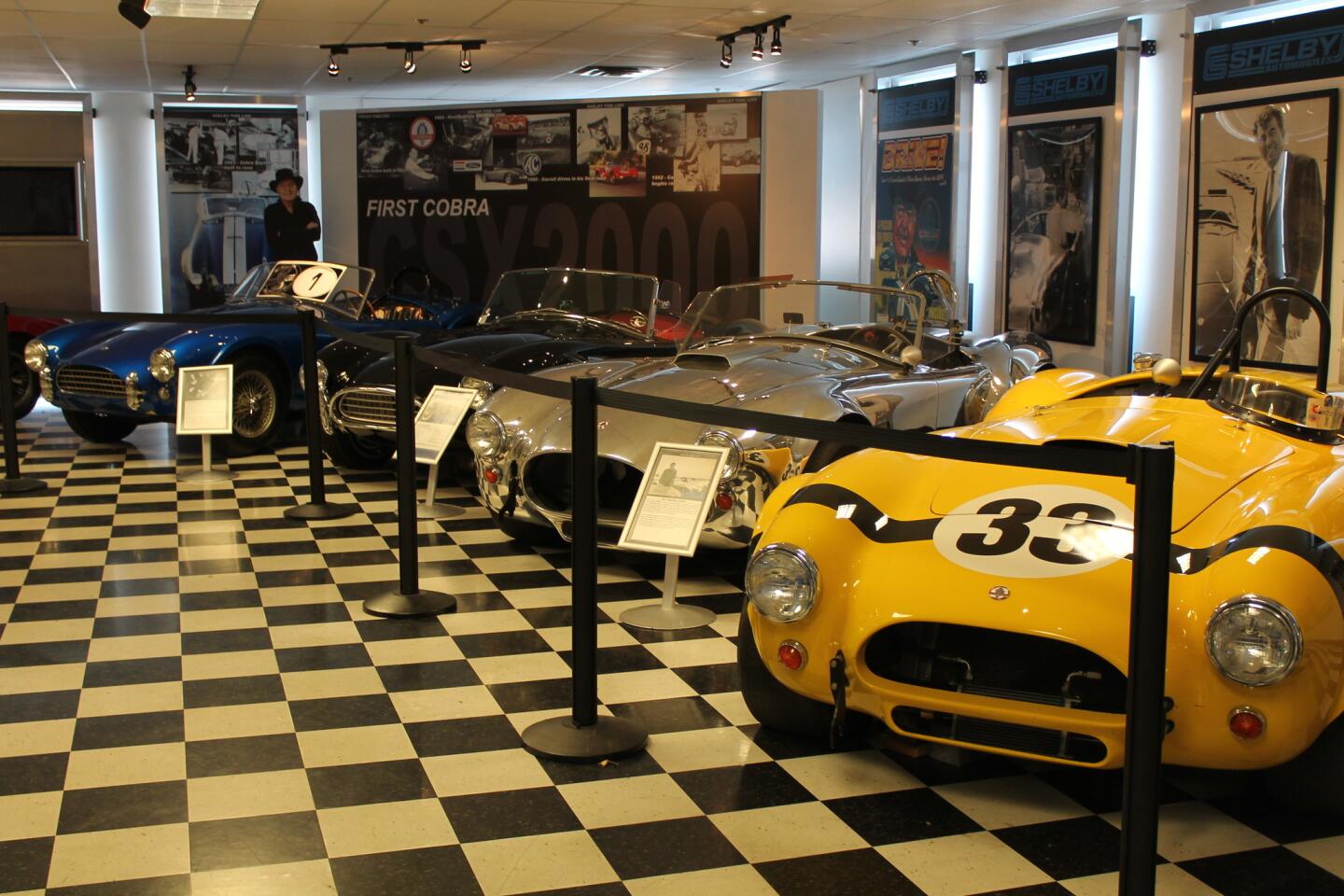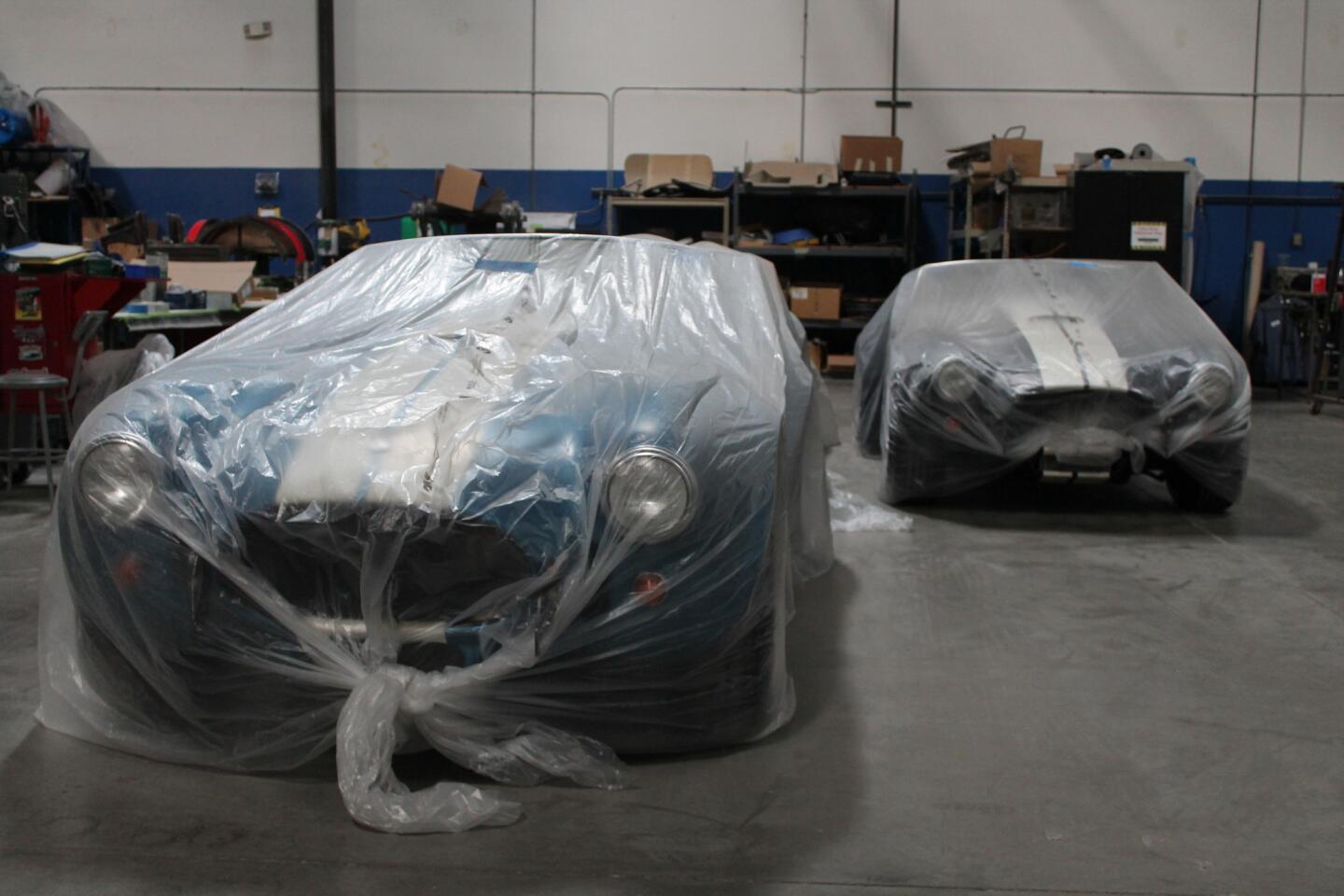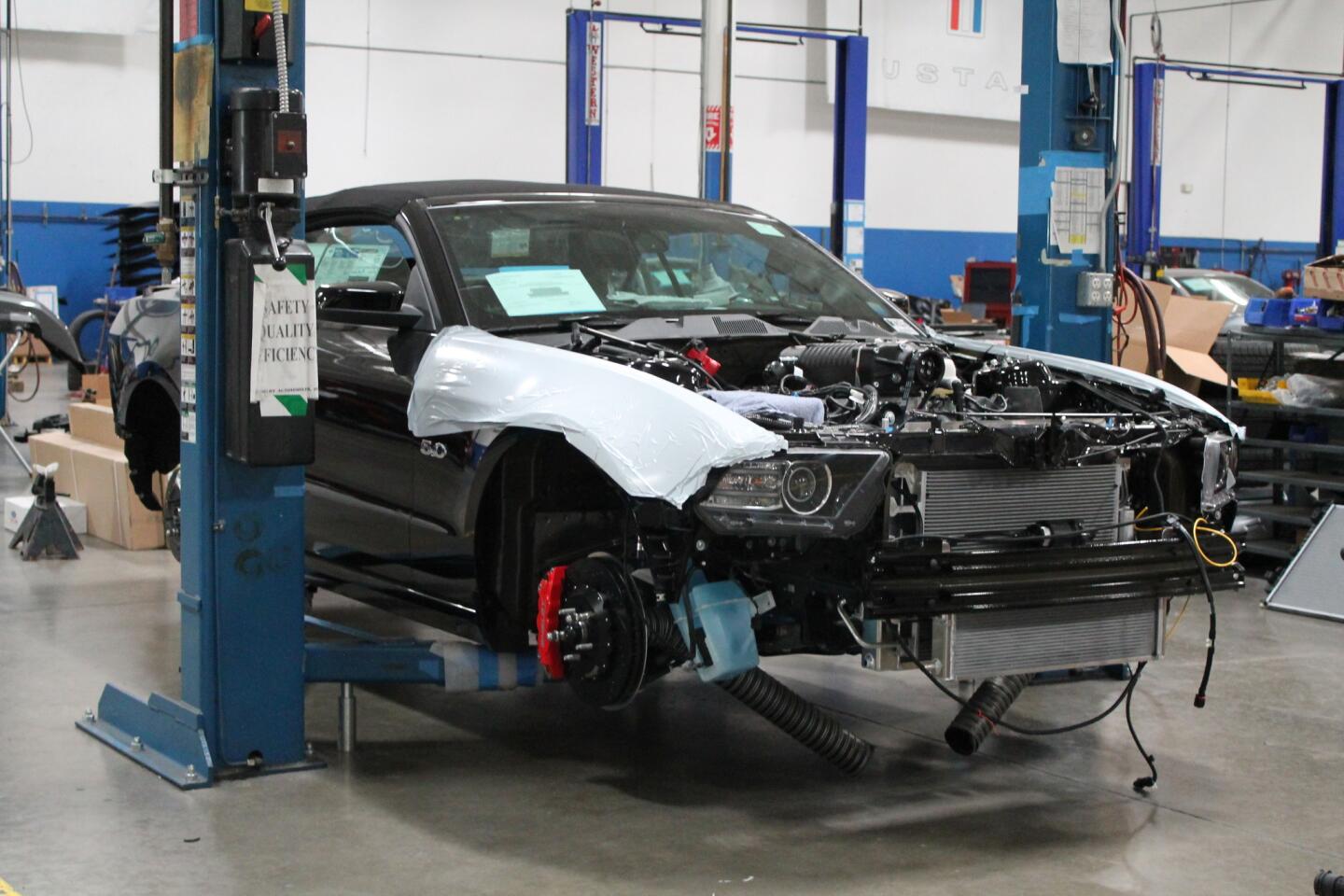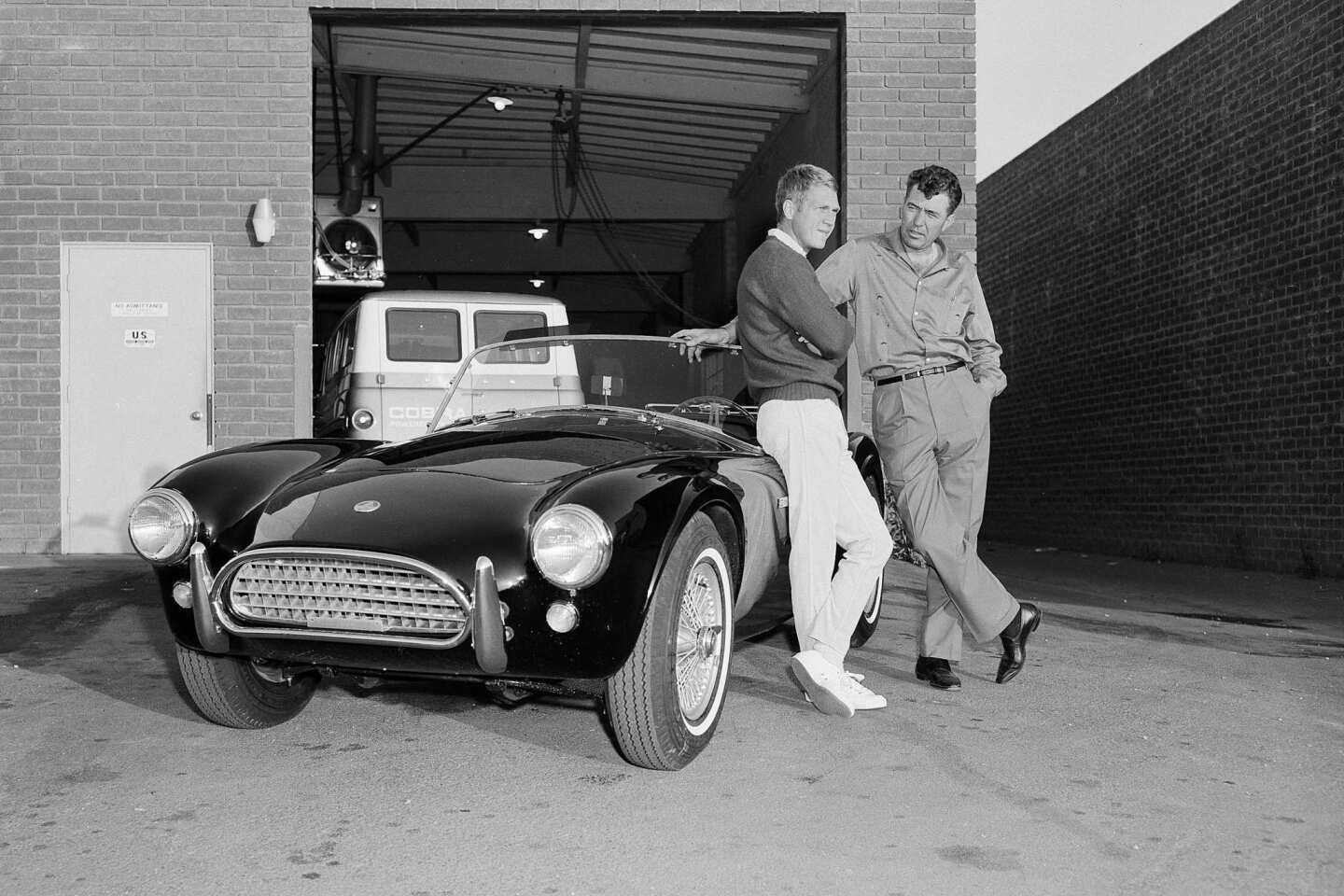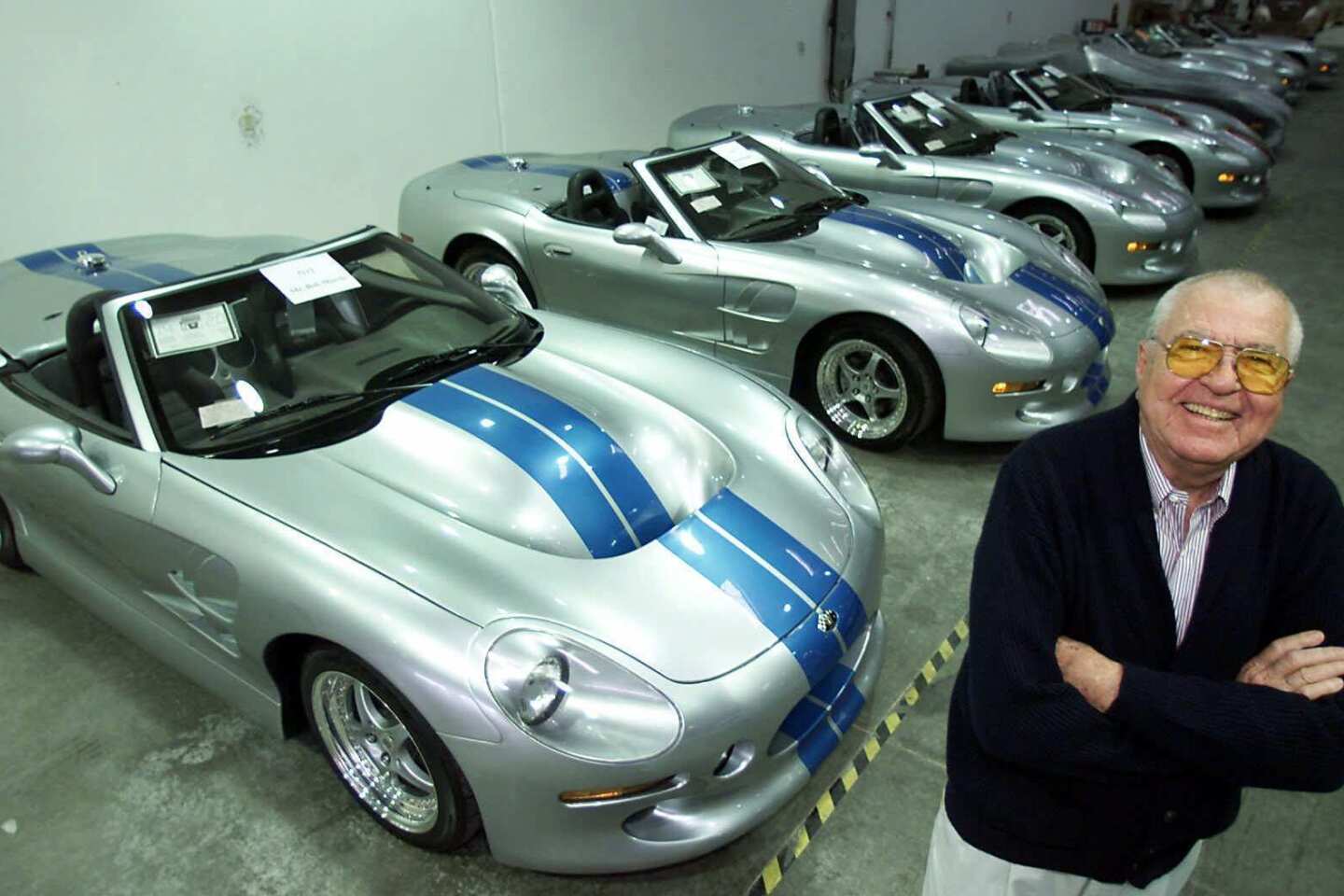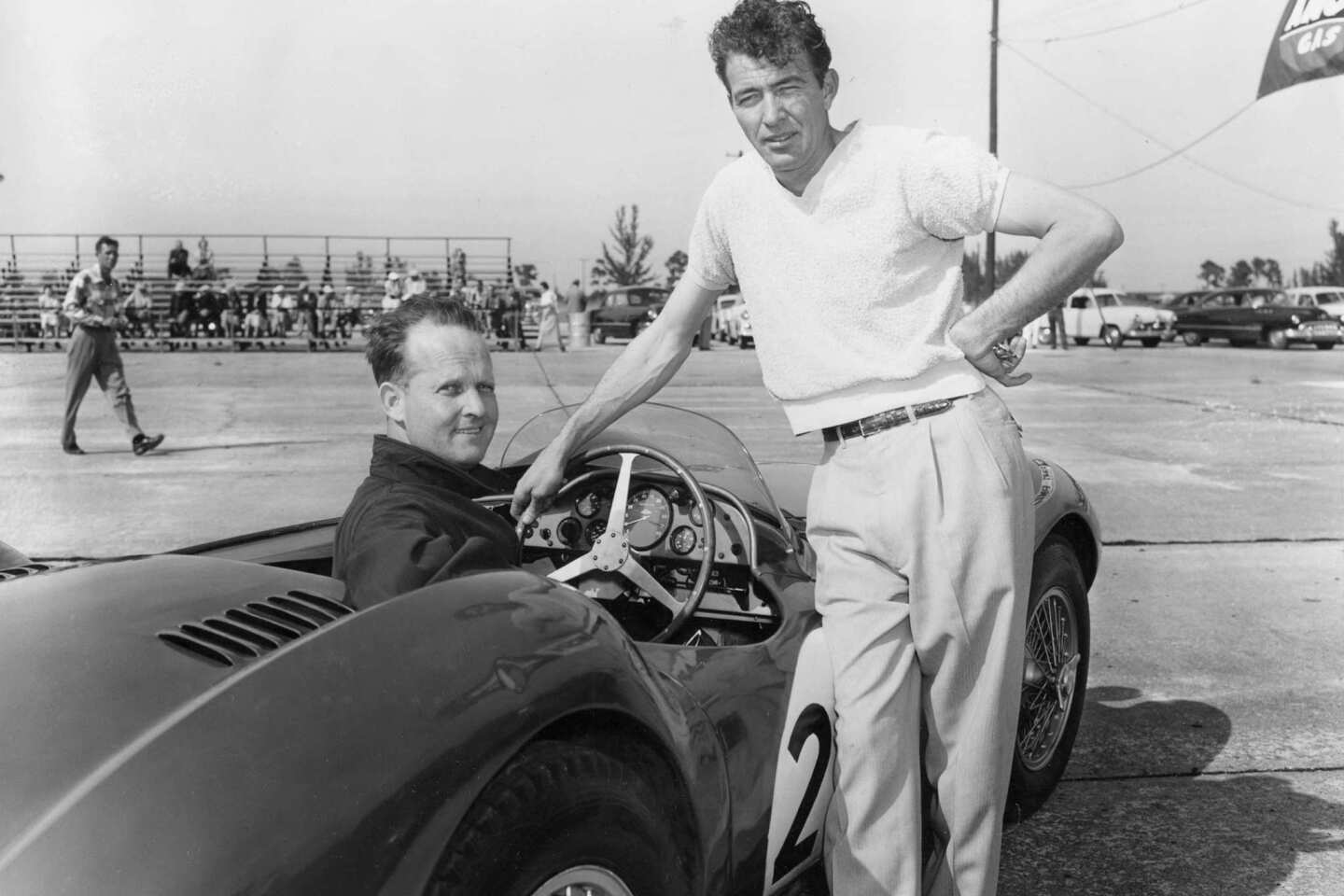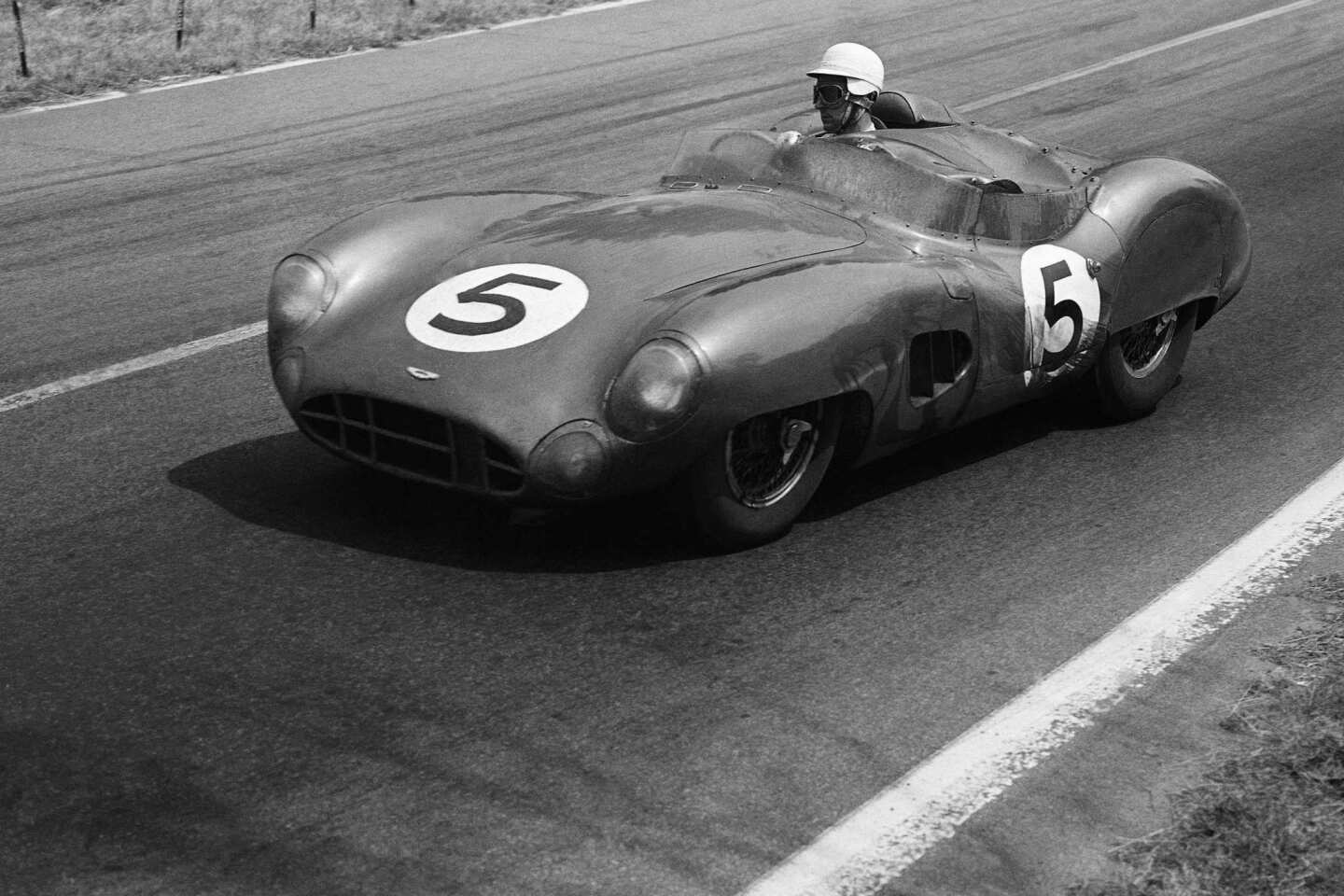Iconic hot-rod company Shelby American driving in new directions
Twenty-one-year-old Taylor Dankel darts around a quick corner of the racetrack and buries the throttle.
The supercharged, 650-horsepower V-8 in his father’s modified 2008 Shelby Mustang GT500KR lets out a guttural roar.
It’s a scene that would have put a smile on the face of Shelby American’s founder, Carroll Shelby. An automotive icon whose career evolved from chicken farmer to world-class racer, engineer and businessman, Shelby died in May 2012 at the age of 89.
But his legacy is everywhere on this windy day in Pahrump, Nev., about an hour outside of Las Vegas. Shelby Mustangs of every age and color underscore Shelby’s rich history of hot-rodding one of America’s most important sports cars, the Ford Mustang. Roughly 275 owners and fans of Shelby vehicles have traveled from around the country for Shelby American’s sixth annual Shelby Bash.
This year’s gathering is significant not only for the quiet sadness over Shelby’s absence. In the wake of his death, Shelby American is a company in transition to new cars, hot-rod parts and sources of revenue beyond just the modified pony car.
Later in the day, Dankel got a firsthand look at one of those new products, hopping into all-new Shelby Focus ST for a few hot laps with test driver Gary Patterson. The small, front-wheel-drive car, based on the turbocharged Ford Focus ST, aims to pull in younger buyers and those who want a more civilized Shelby for daily driving.
He wouldn’t give up his 2001 Mustang Bullitt, but Dankel came away impressed with the Shelby Focus ST.
“You get one of these smaller cars but still have the throttle response of a Shelby,” Dankel said. “It was great around the turns, even with four people in it. It’s really a fun car.”
Although traditionalists may bristle at the Shelby name appearing on anything but a rear-wheel-drive sports car, the Focus ST and the recently announced Shelby Raptor — a full-size truck — have precedents in Shelby history.
“Carroll gave us the playbook,” company President John Luft said at the opening night of the Shelby Bash. “We’re just running with it.”
In the 1980s, Lee Iacocca brought Carroll Shelby to Chrysler. That relationship produced oft-forgotten vehicles like the front-wheel-drive compact Omni GLH hatchback — which stands for Goes Like Hell, per Shelby’s request — and the Shelby Dakota truck.
Shelby also had a hand in developing the first generation of a more modern American motor sport icon, the Dodge Viper.
The spartan Viper was some ways a modern version of the car that first put Shelby on the map as a builder of modified cars: The Shelby AC Cobra, a British roadster stuffed to the gills with a Ford V-8. Shelby built the Cobra after health problems forced an early end to his promising racing career.
A few years later, Shelby was integral in helping the Ford GT40 embarrass the world’s fastest Ferraris in the 1966 24 Hours of Le Mans with a 1-2-3 finish. During this time, Shelby’s connection with Ford would also yield highly prized road cars, including the Shelby Mustang GT350, GT500, and street-legal versions of the GT40.
By the early 1990s, as the value of original Shelby Cobras skyrocketed, Shelby was caught in controversy. After he sold several Cobra 427SC cars that he billed as original 1965 versions cobbled together from long-lost parts — for hundreds of thousands of dollars — it was discovered that the chassis were in fact new. This meant they were worth far less than the true original Cobra 427 models.
After this kerfuffle, Shelby relocated his company from Los Angeles to Las Vegas. He focused his attention on building and selling the chassis and fiberglass or aluminum bodies of the Shelby Cobra, which the company still sells today starting at $80,000.
A decade later, Shelby and Ford rekindled their relationship, first with Carroll Shelby’s input on the Ford GT supercar in 2004, a modern interpretation of the GT40. Then, in 2005, Ford introduced the fifth-generation Mustang. Shelby versions began trickling out in 2006. Models including the Ford Shelby GT, GT500 and GT500KR — the model Taylor and his father, Tom Dankel, brought to the Shelby Bash — were sold as pre-titled Ford products at dealerships.
The GT500 remains in production and now comes with a supercharged, 662-horsepower V-8. It’s currently the only pre-titled car — meaning officially a Ford product — with the Shelby name. Ford pays Shelby a licensing fee.
The relationship benefits both companies because the Shelby model has a halo effect on other Ford products, said David Cole, chairman emeritus of the Center for Automotive Research.
“You want a situation where people want to go into their Ford dealership to see a Shelby Mustang, and, ‘Oh, by the way, the Fusion looks good. I’ll buy that,’” Cole said.
Everything else with the Shelby badge begins life as a stock Ford product before being shipped to Shelby’s sprawling Las Vegas facility for post-titled modification. Some 110 workers make upgrades that are limited only by the number of zeros on the customer’s check. The lineup starts with the Shelby GTS, which adds body modifications and upgrades such as suspension and exhaust to V-6 or V-8 Mustangs. The cost runs between $10,000 and $12,500.
At the other end of the pricing spectrum is the Shelby 1000, the latest version of which the company announced at the 2013 New York Auto Show. This car starts its life as a Ford Shelby GT500. About $155,000 later, a Shelby Mustang with 1,100 horsepower is yours.
It’s these modifications to Mustangs that make up a majority of Shelby American’s revenue, according to Luft. Shelby American has been profitable every year since 2007, according to Neil Cummings, co-chief executive of Shelby’s parent company, Carroll Shelby International.
A majority of the profit comes from Shelby Performance Parts, which offers buyers individual parts rather than entire build kits. Within five years, Luft said, parts sales will make up a majority of revenue as well.
That’s not surprising, Cole said. “Selling parts is much more profitable,” he said. “With Shelby’s volume, the total revenue is small. So it’s an attractive profit center for the company.”
Shelby is also looking to expand its modifications beyond the realm of Mustangs. For the Ford Focus ST hot-hatch, Shelby offers a $15,000 modification that includes a 25-horsepower bump, revised suspension, Borla exhaust, and body and wheel upgrades.
The Focus project was well-received at the Shelby bash. The lower price point of the Shelby Focus ST means the company is opening itself to a new kind of customer, said Daniel Ash of Merlin, Ore.
Shelbys “are not cheap cars,” Ash said. “The Focus allows them to get a car, get the Shelby dream, get into the scene, within their means.”
At the 2013 New York Auto Show, the company announced the Shelby Raptor truck. This model takes the already robust Ford F-150 SVT Raptor and dials the intensity to 11. The $18,000 package adds a supercharger, for 575 total horsepower; a Stinger exhaust; exterior graphics; and custom leather seats.
With these new products released to the public, company president Luft said Shelby American is looking ahead to a much bigger task: preparing for the all-new Ford Mustang, which is likely to debut for the 2015 model year.
Although Ford hasn’t confirmed any details of the car, it’s widely expected to deviate significantly from the current version’s retro-inspired styling in an effort to draw a younger, more global audience. The car could also be offered with turbocharged four- and six-cylinder engines.
For Shelby American, it presents a unique opportunity for growth.
“We can’t wait to get our hands on the 2015 Mustang,” Luft said.
